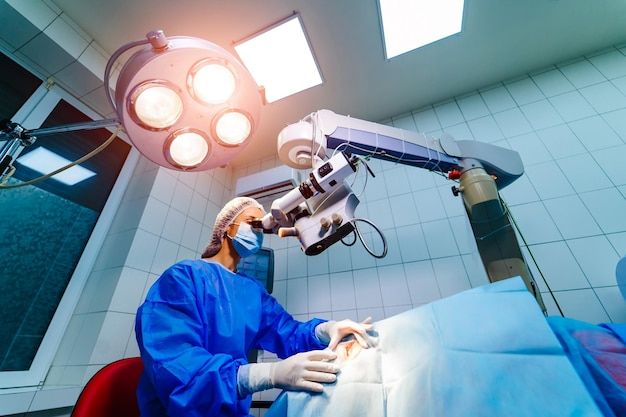Cataracts in children can also occur in children regardless of age because it often occurs when a baby is born which is rarely realized. This cataract is commonly called a congenital cataract which you can find out the cause below!
Congenital Cataracts in Babies
Although relatively rare, this congenital cataract condition if left unchecked can cause blindness in 5%-20% of children. Congenital cataracts are abnormalities that are commonly found in the lens with cloudiness around the lens that makes it difficult for babies to see clearly.
Symptoms of Congenital Cataract
As we know, cataracts can be characterized by eye conditions that look less clear due to the appearance of some cloudiness in the middle of the eye. This white cloud makes the lens of the eye not work optimally due to being partially covered.
You need to understand, cataracts in children can occur in both parts of the eye at once and even the cloudiness that covers the light-focusing part can enlarge and be very dangerous for vision.
It is too dangerous if congenital cataracts are not given treatment in children because it can cause serious things such as shaking eyes and squint which can have an impact on their growth and development.
Causes of Congenital Cataract
The following are 5 causes of congenital cataracts that you should know:
- Hereditary factors are related to the content that plays a major role in the formation of natural lenses such as proteins in pregnant women which can sometimes be infected and cause DNA changes that account for about 23% of the causes of cataracts.
- Disease factors suffered by the mother such as low blood sugar, lack of oxygen, and hypothermia.
- Infectious factors in the body attack pregnant women such as chickenpox, influenza, and polio as well as metabolic disorders.
- Factors that occur in infants such as babies born prematurely usually contribute to the occurrence of cataracts.
- Consumption of certain types of drugs during pregnancy that can cause cataracts, such as tetracycline.
Available cataract treatment in children may not necessarily play a role in cataracts in children because sometimes this condition is difficult to detect, especially in newborns because the eye is said to be still developing.



 INA
INA